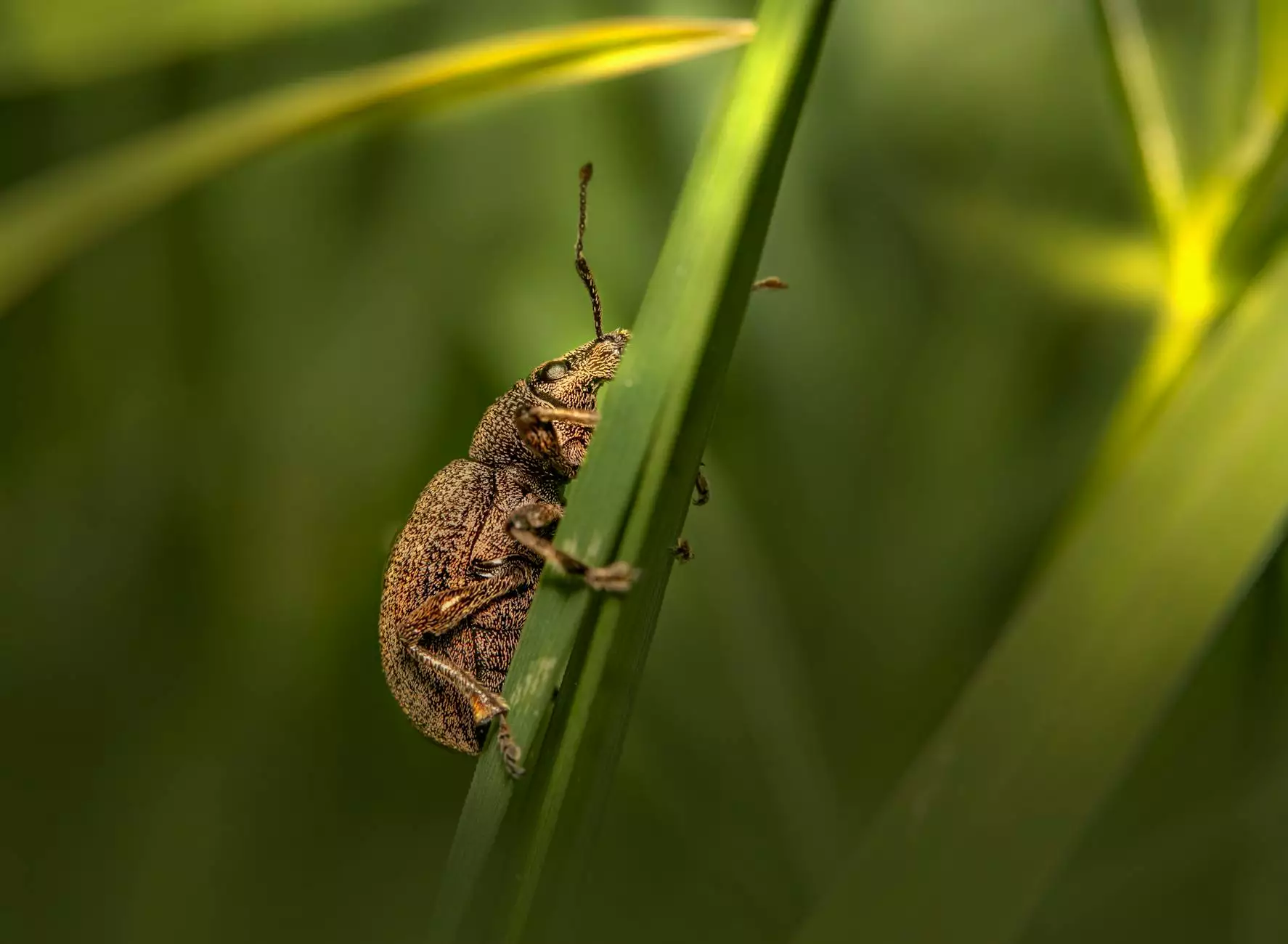Weevil Control in Stored Grain: Essential Insights and Strategies

In agriculture, maintaining the quality of stored grains is paramount for farmers and grain handlers alike. One of the most significant threats to stored grain is the presence of weevils, particularly the rice weevil and granary weevil. This article delves into effective strategies for weevil control in stored grain, ensuring that your harvest remains safe from these invasive pests.
Understanding Weevils: The Enemy Within
Weevils are small beetles that can wreak havoc on stored grains. They infest a variety of grains, including wheat, rice, and corn, leading to significant economic losses. Understanding the biology and behavior of these pests is crucial for effective management and control.
- Life Cycle: Weevils undergo complete metamorphosis, meaning their life cycle includes egg, larva, pupa, and adult stages. It is during the larval stage that they cause the most damage.
- Feeding Habits: Adult weevils feed on the kernels, leading to reduced quality and marketability. The larvae often feed inside the grain, making them hard to detect until serious damage has occurred.
- Infestation Signs: Look for tiny holes in grains, powdery residue (frass), and the presence of adults scurrying around storage bins.
Importance of Weevil Control in Grain Storage
Effective weevil control in stored grain is crucial not only for preserving grain quality but also for maintaining food safety. Inadequate control measures can result in:
- Reduced Quality: Grain infested with weevils is often deemed unsuitable for consumption, leading to economic losses.
- Marketability Issues: Infested grains are less likely to meet the quality standards required by buyers.
- Health Risks: Pests can carry pathogens that may affect human health when consumed.
Comprehensive Strategies for Weevil Control
To effectively manage and control weevils in stored grains, a multifaceted approach is necessary. Here are some detailed strategies for effective control:
1. Preventive Measures
Prevention is the first line of defense against weevils. Implementing the following measures can significantly reduce the risk of infestation:
- Cleanliness: Maintain a clean storage environment. Remove any leftover grains and debris, which can attract pests.
- Temperature Control: Weevils thrive in warm, humid conditions. Keeping storage areas cool and dry can hinder their development.
- Use of Sealed Containers: Store grains in airtight containers to prevent weevil entry and reproduction.
2. Regular Monitoring
Routine monitoring is essential for early detection of weevil presence. Utilize the following techniques:
- Visual Inspections: Regularly check storage areas for signs of infestation such as frass or adult weevils.
- Pheromone Traps: Employ traps to monitor weevil populations. These traps can help identify the presence of weevils before they become a significant infestation.
3. Physical Control Methods
In cases of mild infestation, physical control methods can prove effective:
- Temperature Manipulation: Heat treatment (exposing grains to temperatures above 120°F for a specific duration) can kill all life stages of weevils.
- Freezing Grains: For smaller batches, placing infested grains in a freezer for several days can eliminate weevils.
4. Chemical Control Options
If preventive and physical methods are insufficient, chemical treatments may be warranted. It is crucial to use chemicals judiciously and in compliance with local regulations:
- Insecticides: Chemical insecticides can be applied to stored grain, but thorough knowledge of the product is needed to ensure safety and efficacy.
- Fumigation: For large-scale operations, fumigating storage facilities can eradicate weevil infestations. However, this method requires specialized training and precautions.
5. Integrated Pest Management (IPM)
Adopting an Integrated Pest Management approach can lead to sustainable weevil control. IPM combines multiple strategies tailored to your specific situation:
- Biological Control: Introduce natural predators or competitors of weevils to reduce their populations.
- Monitoring and Data Analysis: Keep records of infestation levels over time to identify trends and improve management practices.
Conclusion: Safeguarding Your Grain
Effective weevil control in stored grain is essential for preserving the quality and safety of your harvest. By employing a combination of preventive measures, monitoring strategies, and control techniques, you can protect your grains from the detrimental effects of weevil infestations. Staying vigilant and proactive is key to ensuring a successful grain storage operation. Implementing these strategies not only safeguards your immediate harvest but also bolsters the long-term sustainability of your agricultural practices.
For further support and professional services in grain storage management, consider consulting with experts in farm equipment repair and farming equipment. Utilizing advanced equipment and techniques can give you the edge in maintaining optimal grain conditions.
At TSGC Inc., we are committed to providing the best resources and assistance in managing your farm's grain storage needs. Explore our offerings today and make weevil control a priority in your agricultural practices!



